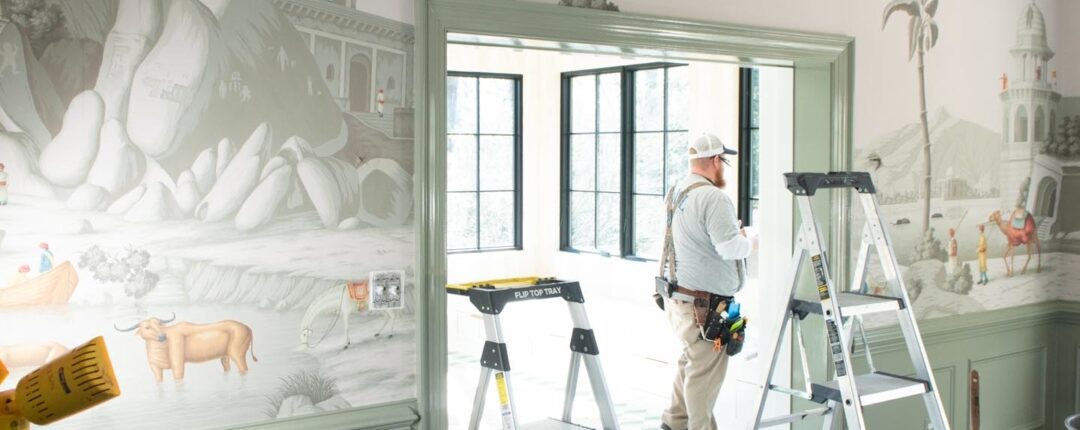Residential wallpaper is enjoying a renaissance, thanks to artistic and technological advances that have created better materials – not just paper! – for the wall and better means by which to attach them. Homeowners who hesitate to have paper hung in their homes because they are afraid of creating a dated appearance or the challenges of removing it will be pleasantly surprised by current options. From murals to updated florals, and graphic patterns to monochromatic prints, new papers give the chance to create impact and a personal statement, even if only on a single wall.
At H.J. Holtz & Son, craftspeople receive extensive training before they are assigned to a wallcovering job. For those who haven’t experienced a wallpaper project, here’s what to expect, with comments from 15-year Holtz wallpaper craftsman Dannon Featherston.
> In-home consultation. A Holtz representative will come to your house, take measurements and photos, and discuss options. It’s important to have made your selection of wallcovering before the consultation, because the type of material used is a key element in the installation. For example, there’s a big difference between hanging a printed paper and a textured grasscloth. The estimator will examine the walls for uneven surfaces and damage, because, as Featherston says, “Whatever is on the wall will reflect 10 times,” once the paper is hung.
If existing wallpaper needs to be removed, this is the time to decide who handles that step. “If we’ve put it up, then we know what’s underneath it,” Featherston says. “It can be tricky if not.” Typical removal involves hot water. “It’s all about saturating it and letting it release itself,” he says. Walls will have to dry thoroughly after paper has been removed, a full 24 hours.
The initial consultation also includes a discussion of how the room will be emptied. It’s best if all furniture is taken out; depending on the size of the room, certain large pieces might be moved to the center and draped. Most homeowners will relocate small items, such as artwork and decorative items on shelves, and will leave moving the furniture to the Holtz team. The perimeter of the room has to allow for standing ladders. “When things are out of the way, the job goes faster,” Featherston says, noting that additional space also needs to be found for the 7’-by-3’ table that is used to cut the wallpaper into sections for hanging. This table can be in another, nearby space, if the room where the work is being done won’t accommodate it.
> The process really gets underway when the team comes with the cutting table. At this time, there will be a conversation about which holes in the walls should remain, for when artwork or light fixtures are replaced. After that, the floors will be draped, and the team will sand uneven areas, fix holes, and apply sizing – a primer with gloss that allows the wall covering to be released later, when a change of scenery is desired. “The primer is clear and actually soaks into the wall,” Featherston says.
> Before any paper is hung, expect the team leader to create a plan for the room. Featherston says paper is hung from a guest’s point of view: the primary focal point for someone stepping foot into a space. Starting from a central location, he takes measurements so he knows exactly how many pieces of paper to cut, and in what dimensions. “We lay off the room piece by piece and cut the paper in advance, which minimizes waste,” he says.
> The paper or covering itself is hung relatively quickly, but it won’t be finished until it has dried and cured fully. Depending on the material used, drying may take overnight or a couple of days. As it cures, the material will shrink and hug the wall. As paper is being hung, it might look mottled or have color variations, or appear to have bubbles underneath, due to the adhesive being used. This is not a concern, Featherston says. “The moisture throws people off,” Featherston says. “Those bubbles are sucked in as it dries, and the color will even out.”
> Once the paper is dried, the Holtz & Son team will help by returning the room’s contents to their places.
In terms of duration, wallpapering a small to normal-sized powder room can happen in a single day, not including the consultation. It’s not much time for a change that makes a big difference.

